Australian Tropical Rainforest Plants - Online edition
Ficus racemosa L.
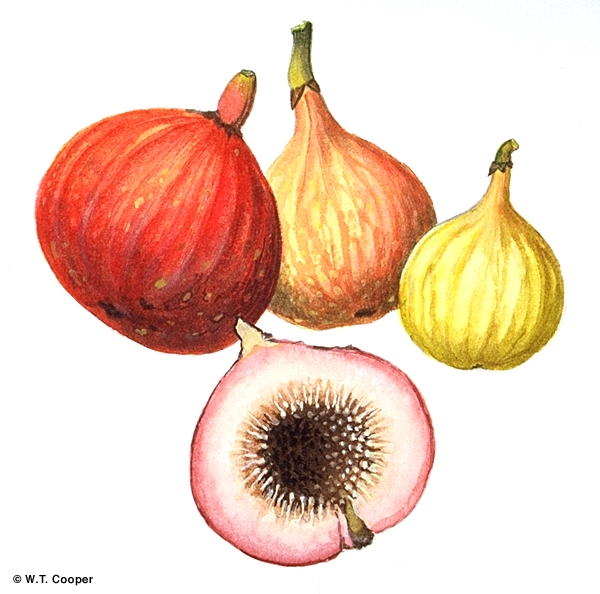

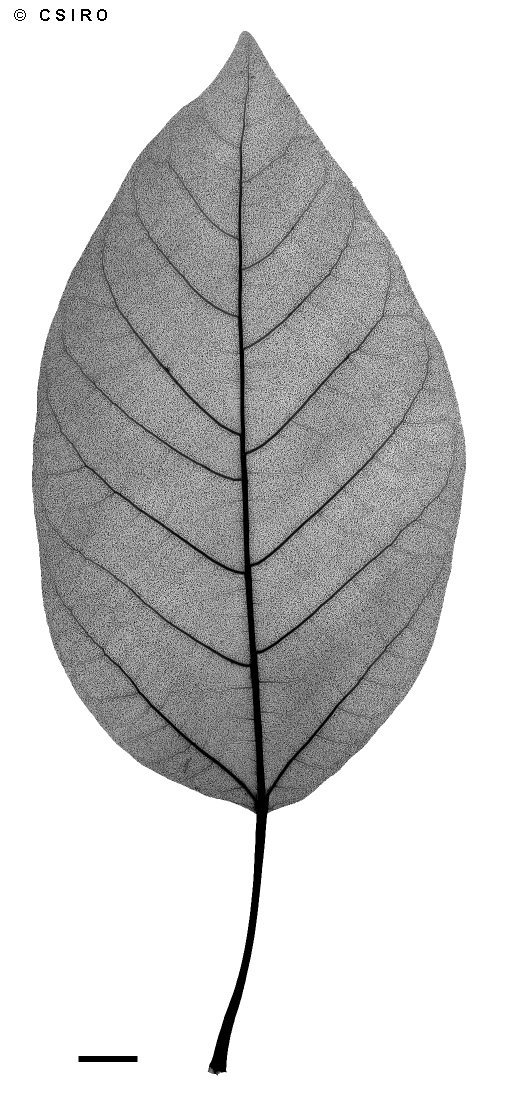
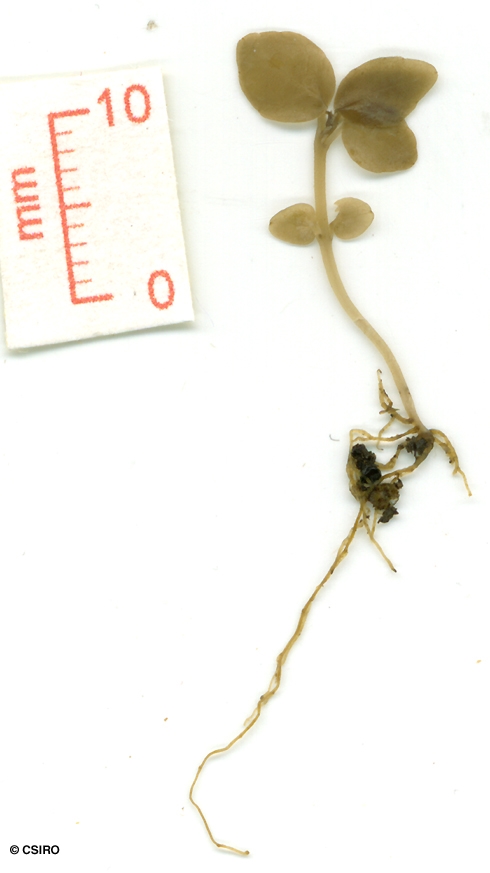
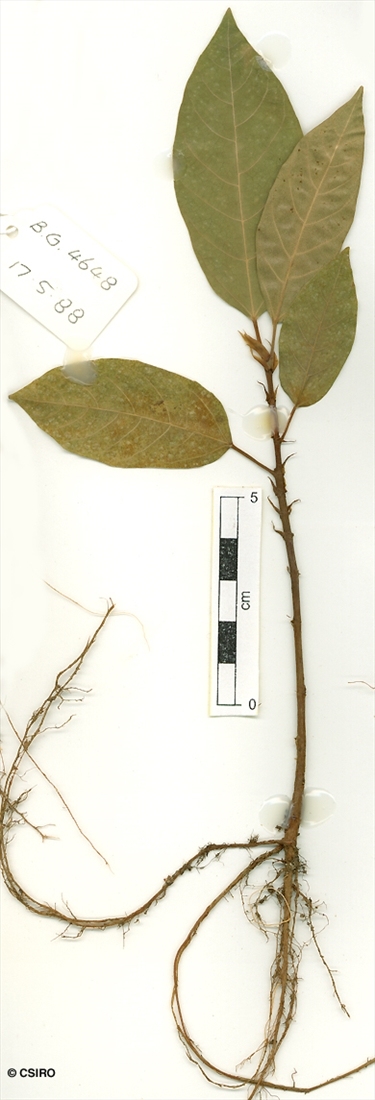
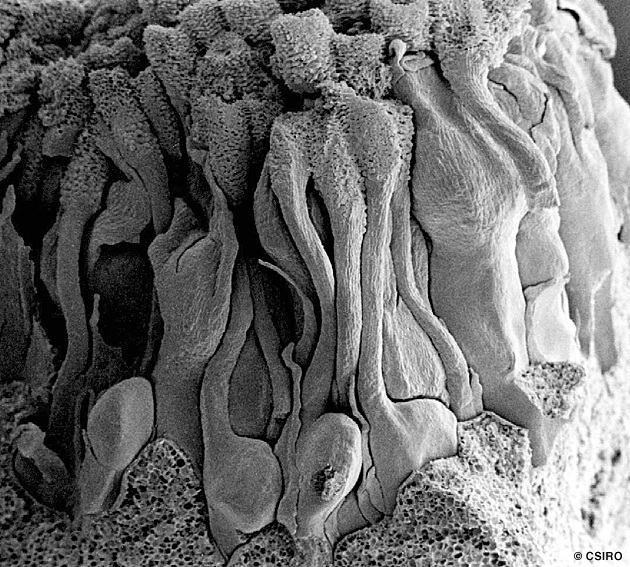
Linnaeus, C. von (1753) Species Plantarum 2: 1060. Type: Habitat in India.
Fig, Cluster; Cluster Tree; Figwood; Fig Tree; Cluster Fig
Figs produced on special shoots from the trunk and main branches. Figs pedunculate, globular or depressed pyriform, about 30-35 x 35-40 mm. Orifice closed by interlocking and inflexed bracts.
Cotyledons orbicular, about 2 mm diam. At the tenth leaf stage: leaf blade ovate, apex acute, base obtuse, margin smooth or crenate, upper surface glabrous; oil dots very small, difficult to see with a lens; petiole with a few scattered hairs; stipules sheathing the terminal bud, about 5-10 mm long, persistent. Seed germination time 13 to 81 days.
Occurs in WA, NT, CYP, NEQ, CEQ and southwards as far as south eastern Queensland. . Altitudinal range from sea level to 500 m. Grows in dry rain forest, beach forest and gallery forest sometimes in areas which are otherwise quite dry and not conducive to rain forest development. Also occurs in SE Asia and Malesia.
Fruit eaten by several species of birds. Cooper & Cooper (1994).
Food plant for the larval stages of the Two-brand Crow Butterfly. Common & Waterhouse (1981).
This species may have medicinal properties. (http://squid2.laughingsquid.net/hosts/herbweb.com /herbage/A11274.htm)
This tree is an important food source for a variety of birds and animals. Feral pigs are particularly fond of the fruit of this species and will pull branches down to obtain the fruits. Keen pig shooters will nearly always be successful if they wait near or in a fruiting tree of this species around sundown, assuming that they can shoot straight.





